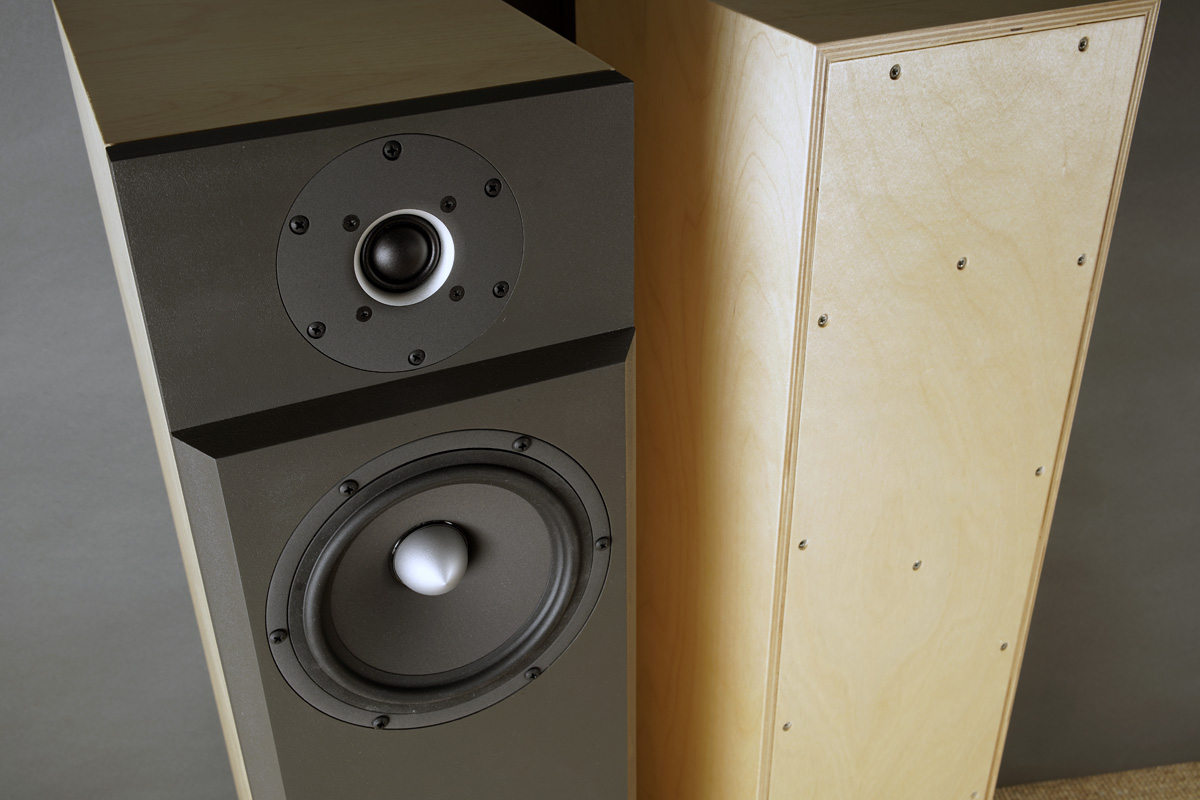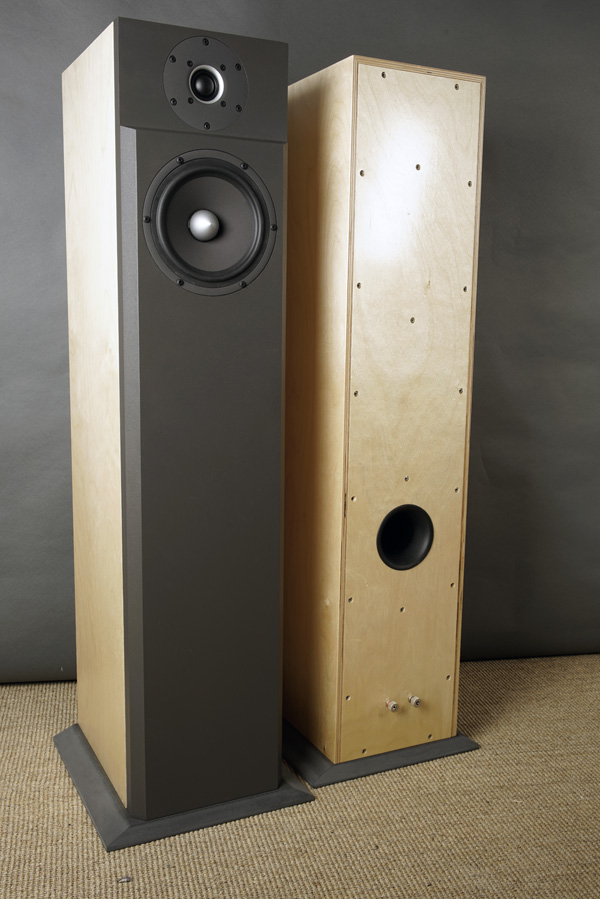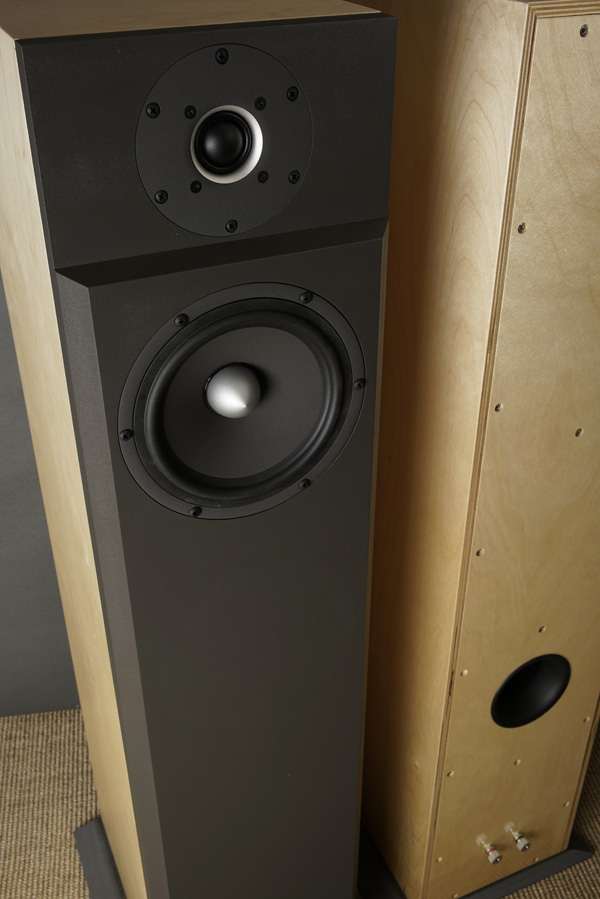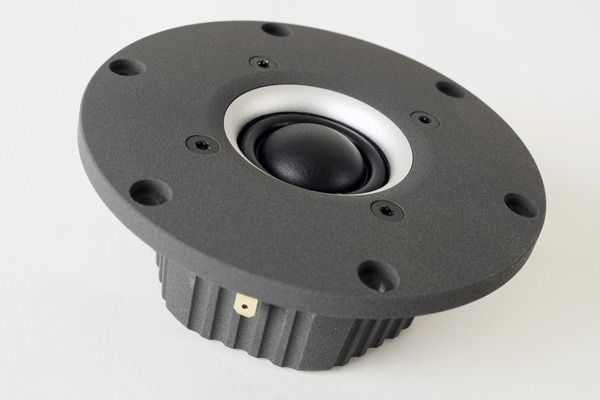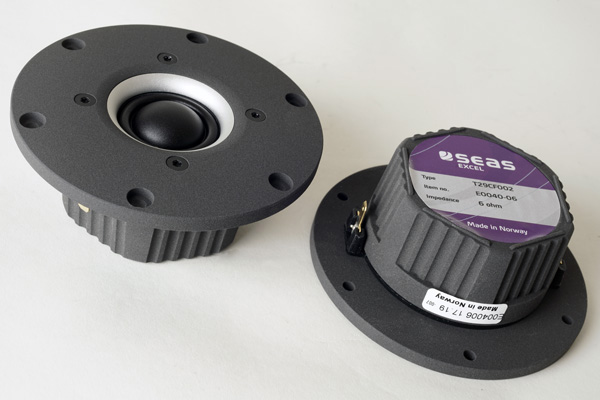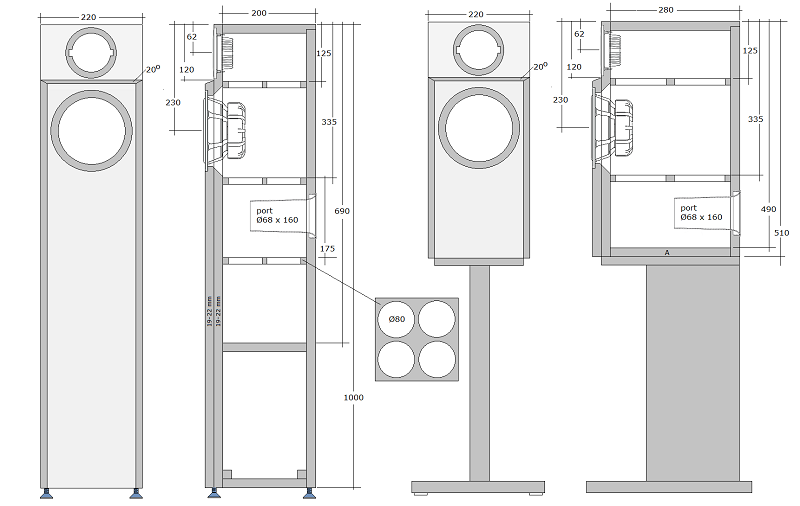DIY Loudspeakers: HOME INDEX UPDATES RESPONSE WHAT'S NEW
CNO-mkIII
Copyright 2019 © Troels Gravesen
Go to on this page:
DRIVERS
CROSSOVER
CABINET
MEASUREMENTS
SPEAKER-KIT
CROSSOVER LAYOUT
11-01-2021: CNO-mkIII updated with new SEAS W18NX003 driver. See
below.
CNO-mkIII is the first speaker in a range of upgraded CNO constructions.
Later there will be a CNO-25-mkII, a 2½-way, and icing of the cake will
be a 3-way from 2 x W18 + W12 + T29.
The CNO speakers have been the best selling kits from the SEAS portfolio
- and for good reasons. These nextel coated SEAS drivers just sounds
great and have found their way into some serious high-end speakers as
observed at the Munich High-End Show in recent years.
If you want to change your mkI and mkII to mk III, you must make
a list of the coils and caps you have. For caps value and brand. For
coils value and DCR. Send this to Jantzen Audio and they'll see what can
be taken out of the kit.
All of the new CNO constructions will require new cabinets.
My previous designs have featured 4th order series crossovers. I had a crush on series crossovers some ten year ago. I don't mind series crossovers at all, and sometimes we can find very simple solutions with series crossover like the 8008-CORNER, a crossover that could not have been made as simple from a standard parallel crossover. We never can tell before we have our final cabinets and drivers in place and start modeling and set up test crossovers to see and hear what works and what doesn't.
Now, quite a few people have found the quite elaborate 4th order series crossovers troublesome with regard to construction and implementation and from the last ten years experience in speaker design, series crossovers do not necessarily have an advantage in sound quality compared to parallel crossovers.
The Nextel coated drivers can do with a lot less than 4th order crossovers as can be seen here from the SEAS W18NX003 driver mounted on the Jenzen cabinets. The W18NX can be run 1st order by simple means, but whether that sounds good is to be heard. Just because something works technically doesn't automatically produce the best sound. It doesn't work that way.
It's been quite some time since I last heard these Nextel coated drivers
- and I'd forgotten how good they are. The 18WNX001 reminds me of my
current Ellipticor 18WE drivers. These SEAS drivers are as easy on
crossovers as the Ellipticors.
With default tweeter attenuation these speakers deliver a smooth and
balanced presentation with decent bass given their size. If you want
more bass, wait for the CNO-25-mkII, but obviously at a higher price -
and maybe bigger cabinets depending on your choice of design as can be
seen below.
The CNO-mkIII is not a speaker particularly demanding on source
material. I hate to say they're forgiving, because forgiving is often
associated with lack of detail and transparency. These W18NX drivers are
in no way short of detail and transparency but the intrinsic smooth
response - as for the Ellipticors - pays of in an ear-friendly overall
presentation. If they turn edgy, we haven't done our crossover work
properly - or we play too loud.
Oh, and I had forgotten what a phenomenal tweeter this Crescendo T29CF002
is. One of the true high-end tweeters, albeit at a price.
On top of all this, these EXCEL drivers come with an impeccable finish. Lovely pieces of engineering.
BTW: Two of my 18WNX001 drivers were actually ten years old and I was
pleased to find that they performed exactly the same as the new ones
supplied by SEAS. And this goes for the W12CY003 as well meant for the
CNO-3-way. We pay for this consistency in production - and it's worth
while.
Basics:
2-driver speaker.
Dimensions: 22 x 24 (32) x 100 cm, WxDxH - or 22 x 32 x 51 cm
(stand-mount, see below).
System sensitivity: 86 dB/2.8V/1 meter.
Impedance: 8 Ohms (this is very much an 8 Ohm speaker with a minimum 6.2
Ohm @ ~200 Hz. Easy load for tube amps).
Point of crossover: 2500 Hz, LR2 crossover.
Power requirement: 20+ watts/channel.
Power handling: 80 watts. Please
also read:
http://www.troelsgravesen.dk/power-handling.htm,
and remember any burned driver is a misused driver.
Useful links:
http://www.troelsgravesen.dk/tips.htm
http://www.troelsgravesen.dk/crossovers.htm
http://www.troelsgravesen.dk/LCR-RC.htm
FAQ:
You cannot change cabinet front panel dimensions and drivers' placement
without needing a new crossover - and I cannot help.
You cannot use any other drivers with the crossover shown here.
Please read these files before e-mailing:
http://www.troelsgravesen.dk/crossovers.htm
http://www.troelsgravesen.dk/choices.htm
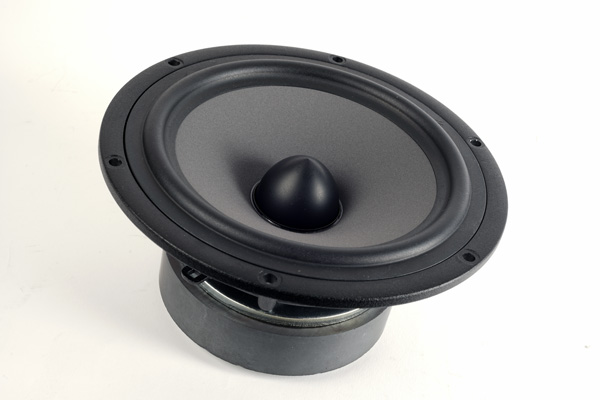
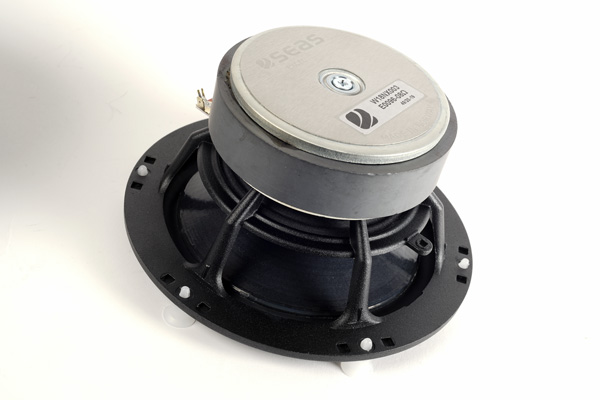
W18NX003
Click images to view large
Download driver specs: T29CF002 W18NX003
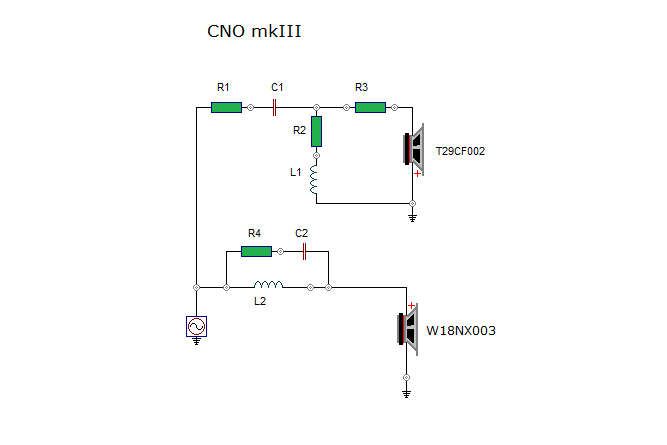
The crossover hardly gets simpler than this. It may look like a 1st order crossover, but in reality we reach a near-perfect LR2 profile with perfect phase integration from the stepped baffle providing proper time-alignment. Below the crossover simulation:

Point of crossover around 2.5 kHz if we add some smoothing to the graphs.
http://www.troelsgravesen.dk/tips.htm
Cabinet option A
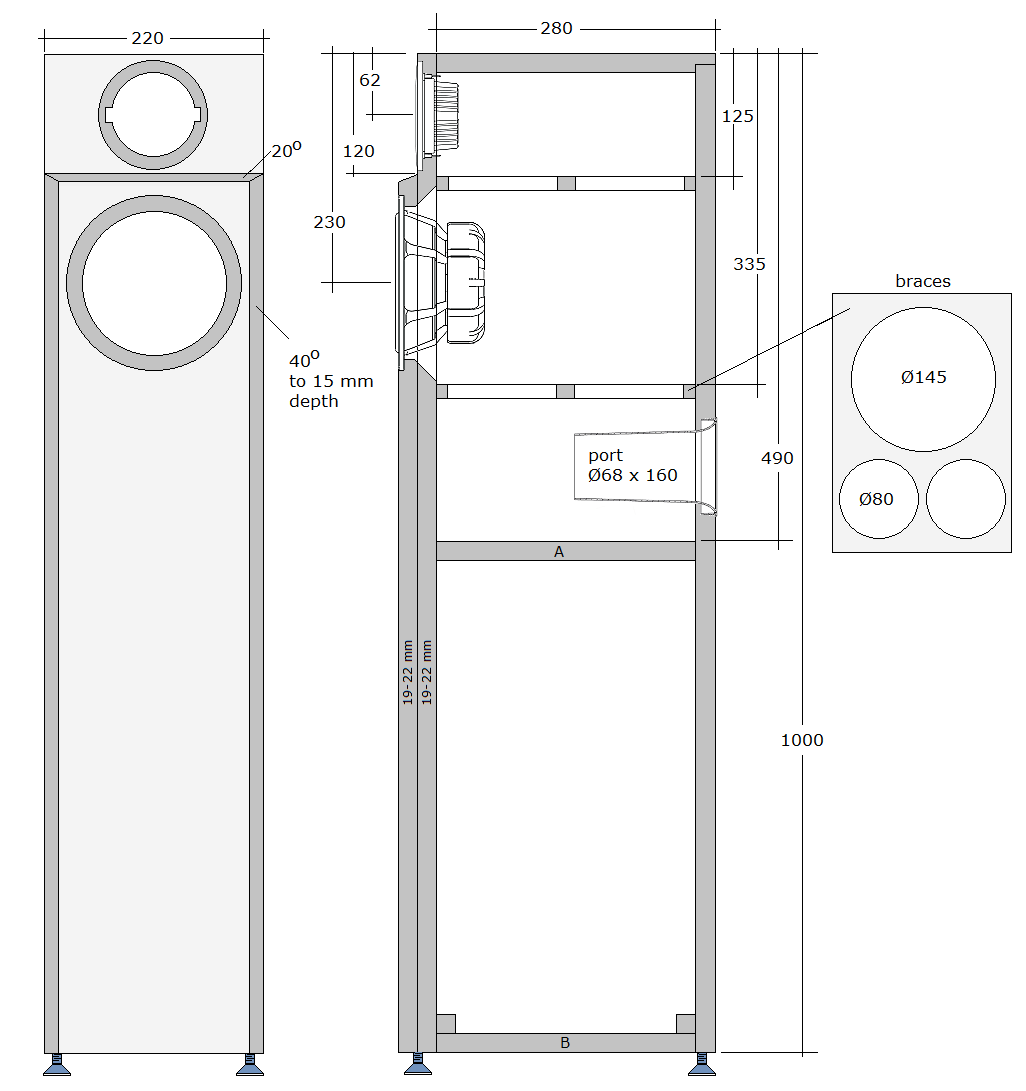
The cabinet volume is 22 litres, giving an F3 = 42 Hz. Port is tuned to
42 Hz from Ø68 x 160 mm.
Now, you may seem there's an awful lot of waste volume - and you're
right. I made these cabs for both the CNO and the 2½-way CNO-25, the
latter with two 18WNX001 driver. If you make the cabinet with a
removable rear panel you may attach the bottom panel A with screws and
later add a second driver should you want to expand your speaker. Then
the bottom panel is B. If you take this route, you have to be able to
remove the front panel for routing for the second driver.
DO NOT forget
to chamfer drivers holes to allow free ventilation of the driver.
Another option is to reduce the 280 mm depth to 200 mm and have bottom
panel A at 690 mm from top. This makes 22 litre.
A third option is to make the CNO mkIII as a stand-mount with a cabinet
height of 510 mm. Drawings below.
Key issue here is having the correct panel width and drivers' placement
with regard to the top of the cabinet.
Cabinet options B (left) and C (right)
Cabinet damping:
Add bitumen pads to all internal panels except front panel.
Add 8 mm felt to all internal panels except front panel.
Add 8 layers of acoustilux at bottom of cabinet and 4 layers at top of cabinet.
(for stand-mount 2 layers at bottom below port.
Add 2 layers of acoustilux behind 18W driver on rear panel. Goes for all
cabinet options.
Place crossover at bottom of cabinet and attach bottom panel B with screws for access to the crossover. For stand-mount place crossover behind midbass driver on rear panel.
Workshop images
I won't show a lot of workshop images this time as it will be a repetition of so many former floor-standers. I suggest taking a look at Ekta mkII and similar constructions for inspiration. Cabinets can be made in numerous ways and render the same positive result. Only thing to remember here is to maintain the stepped baffle, baffle dimensions and drivers' placement.
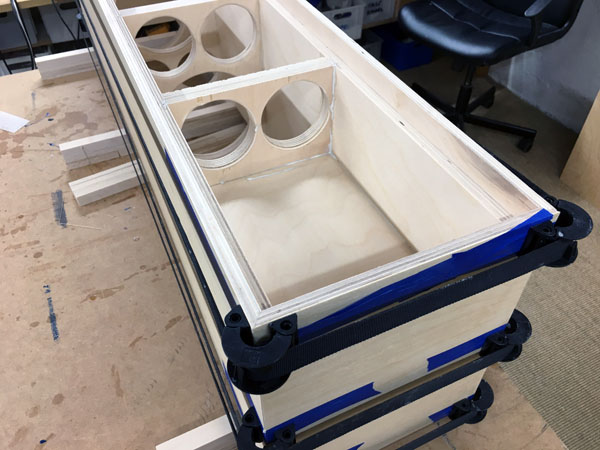
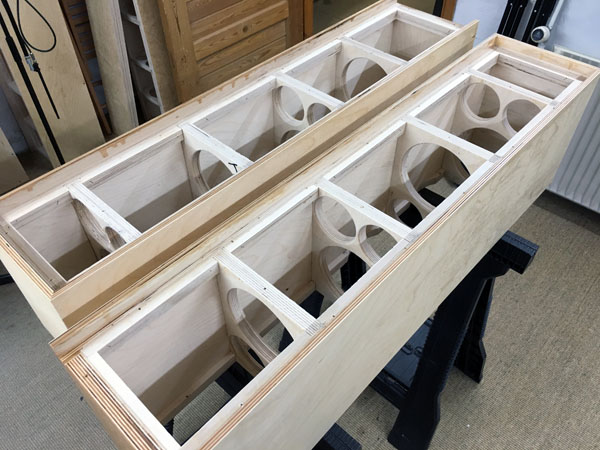
Cabinet to the left is the CNO-3-Way, but same procedure for all CNOs.
To the right the actual CNO-mkIII/CNO-25-mkII.
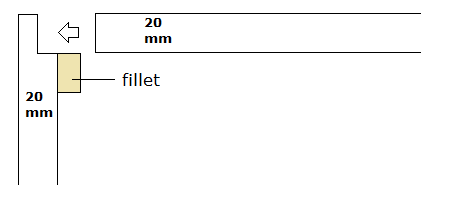
I used 20 mm panels throughout, not laminated as I often have the
question.
What you see is a rebate for the rear panel, not laminated panels.
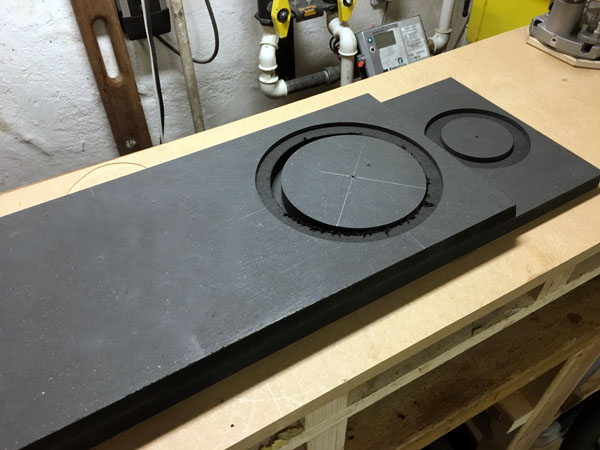
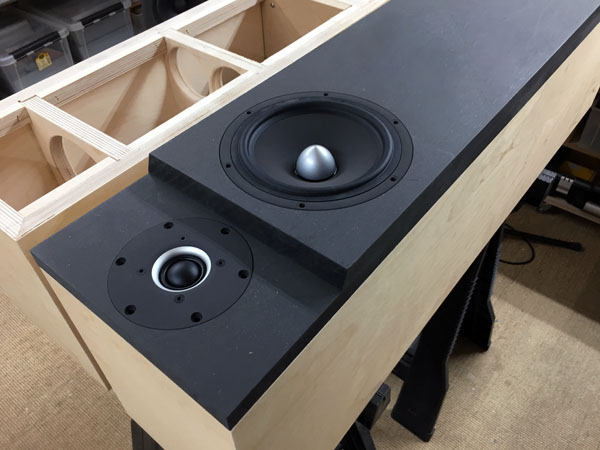
Routing front panels for drivers.
Remember to chamfer driver holes properly not to make any acoustic
resistance to the rear radiation of the driver.
If not, bad things may happen, read
here.
To the left the CNO-25-mkII front panel. To the right CNO-mkIII.
http://www.troelsgravesen.dk/tips.htm#Router_guide

Chamfering of 18W driver holes.
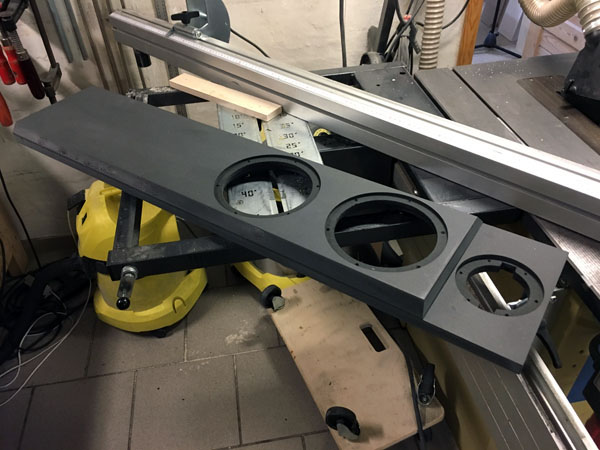
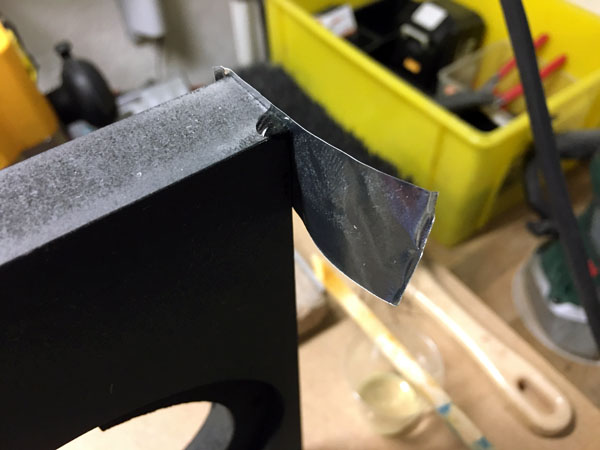
Front panels ready for paint - well, almost, sometimes we bump a
corner..
Piece of tape, a drop of epoxy, 12 hours, sanding and it's as strong as
ever.
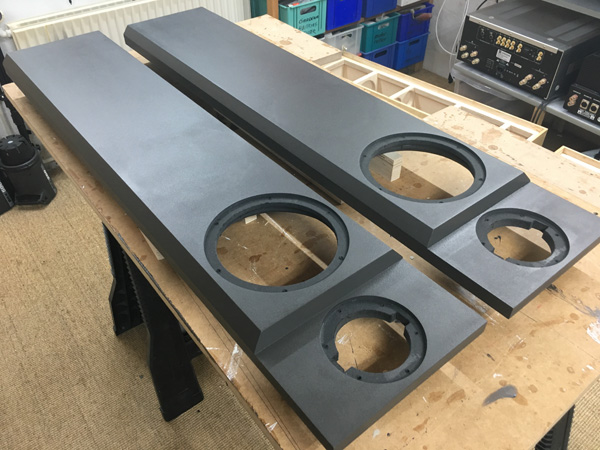
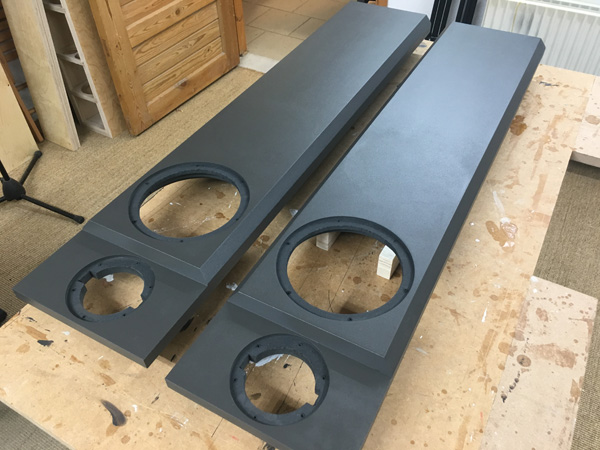
Panels drying after paint.
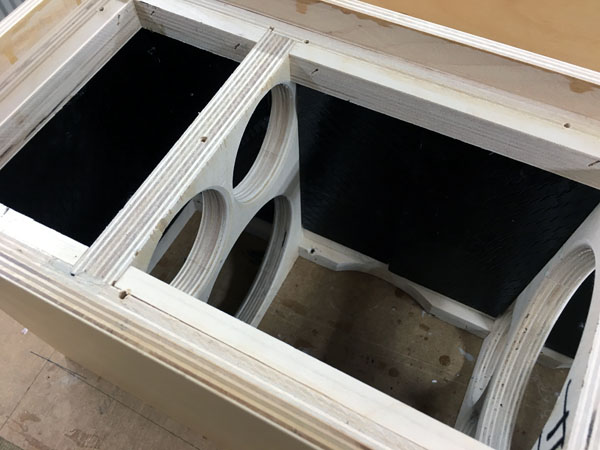
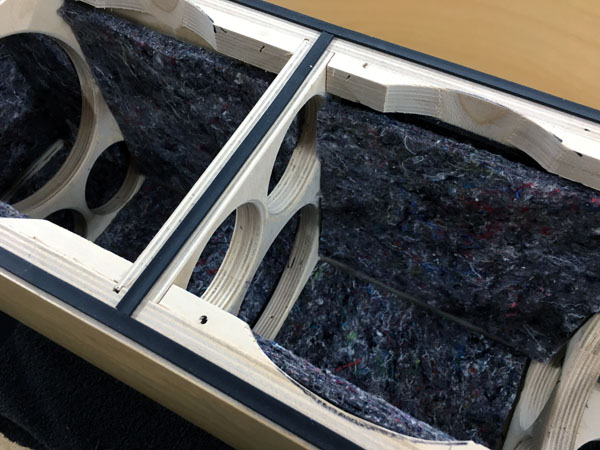
Left: Bitumen pads. Right: Felt damping.
The bitumen pads are optional and
must be added to your order.
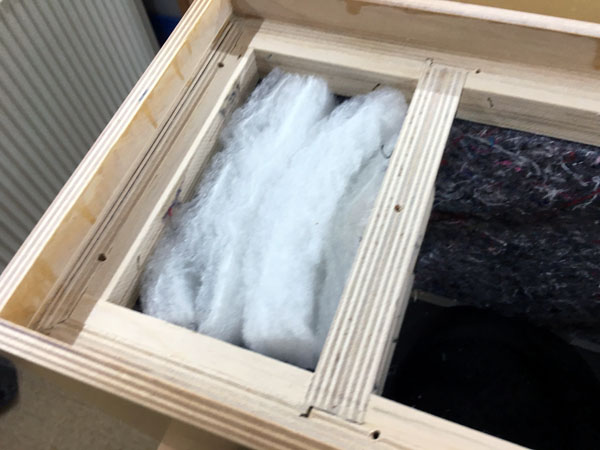
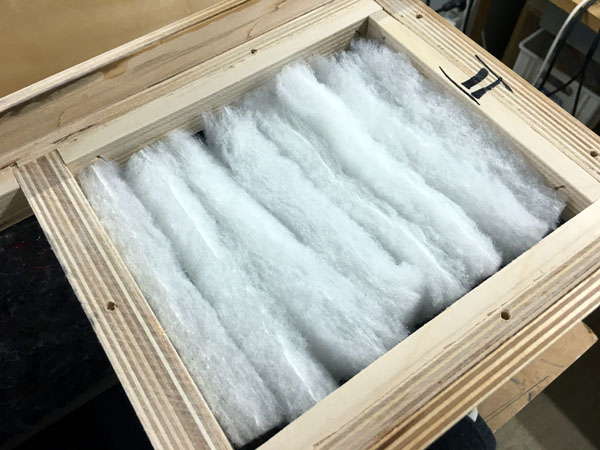
Left: Four layers at top of 30 mm acoustilux. Right: Eight layers at
bottom above crossover of 30 mm acoustilux.
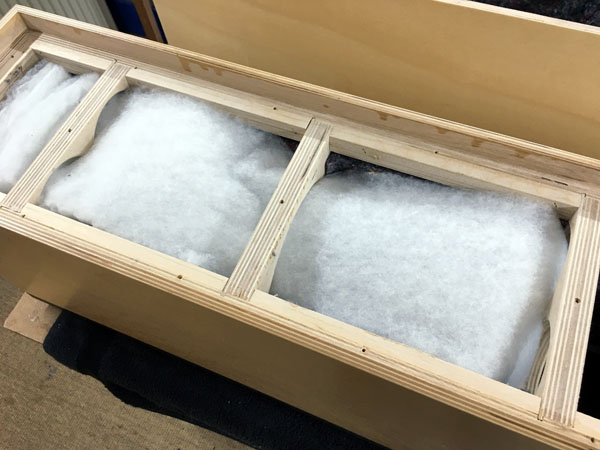
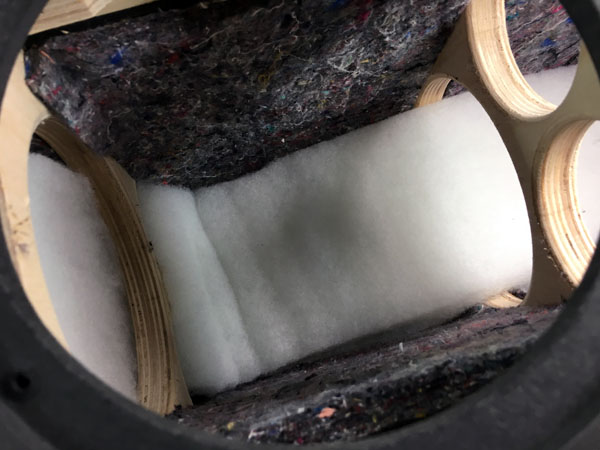
Two layers of 30 mm acoustilux behind midbass
driver, here seen from rear and front.
Cut in total 16 pcs of 15 x 50 cm for both cabinets (full-size
cabinets).
For stand-mount and reduced depth option, see cabinet drawings and
damping recommendations.
Felt material is the same for both
cabinet options.
A few comments on
MEASUREMENTS before you start interpreting the readings below.
First of all, if we think measurements will
tell us how a speaker sounds, we're wrong. The perception of sound is
way too subjective to be reflected in any measurements we can perform. A
loudspeaker system is meant to give us a satisfying idea of an acoustic
event and for some people a pair of 5 USD ear-plugs are enough, others
spend 200 kUSD on a truly full-range pair of speakers - and the latter
may not be happier than the former.
Measurements may give us an idea of tonal balance of a system, i.e. too
much or too little energy in certain areas, although dispersion
characteristics play a vital role here. A two-way 7+1 and a three-way
7+4+1 may display similar horizontal dispersion, yet sound very
different. Measurements may tell us about bass extension if far-field
measurements are merged with near-field measurements. In addition to
this, ports may contribute to bass extension. Most of we diy'ers do not
have access to an anechoic room for full-range measurements from
20-20000 Hz.
What cannot be seen is what kind of bass performance we get in a given
room. Bass performance is highly dependent on in-room placement of your
speaker and the same speaker can be boomy in one place and lean in
another. Actual SPL level at 1 meter distance and 2.8V input is useful
for en estimate of system sensitivity and combined with the impedance
profile may give an idea of how powerful an amplifier is needed to drive
the speaker to adequate levels.
What measurements do not tell is the very sound of the speaker unless
displaying serious linear distortion. The level of transparency, the
ability to resolve micro-details, the "speed" of the bass, etc., cannot
be derived from these data. Distortion measurements rarely tell much
unless seriously bad, and most modern drivers display low distortion
within their specified operating range.
Many people put way too much into these graphs and my comments here are
only meant as warning against over-interpretation. There are more to
good sound than what can be extracted from a few graphs. Every graph
needs interpretation in terms of what it means sonically and how it
impacts our choice of mating drivers, cabinet and crossover design.
What measurements certainly do not tell is the sonic signature of the
speaker, because speaker cones made from polypropylene, aluminum,
Kevlar, paper, glass fiber, carbon fiber, magnesium, ceramics or even
diamonds all have their way of adding spices to the stew. Nor do
measurements tell what impact the quality of the crossover components
add to the sound, from state of the art components to the cheapest of
coils and caps, they all measure the same if values are correct, yet
sound very different.
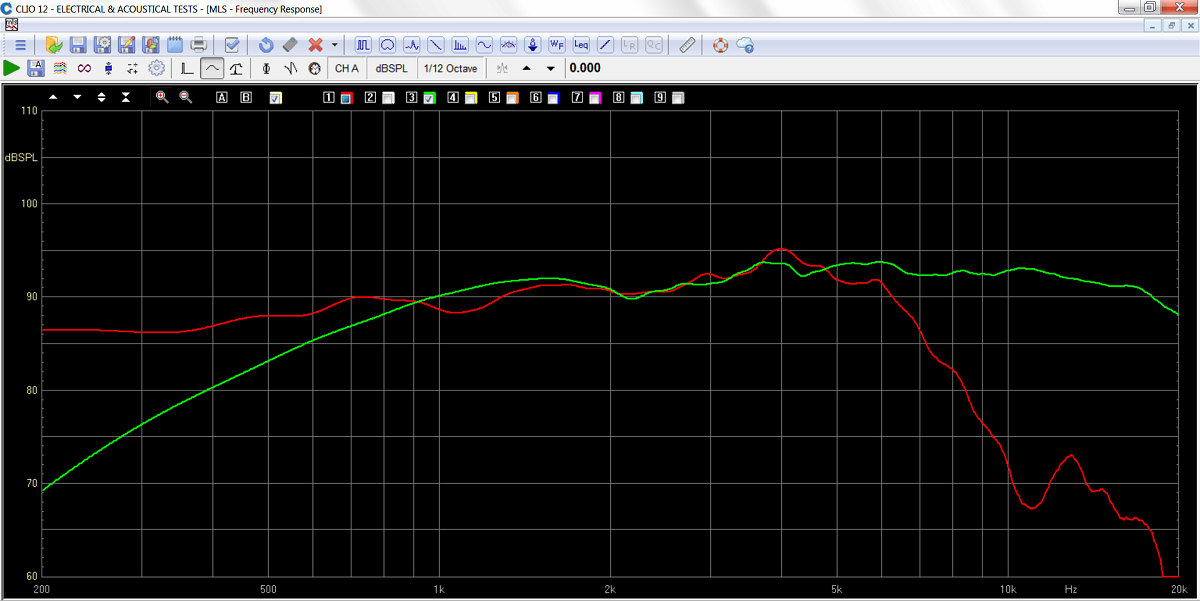
Intrinsic response of drivers on actual baffle without crossover. Fairly
easy, I should say.
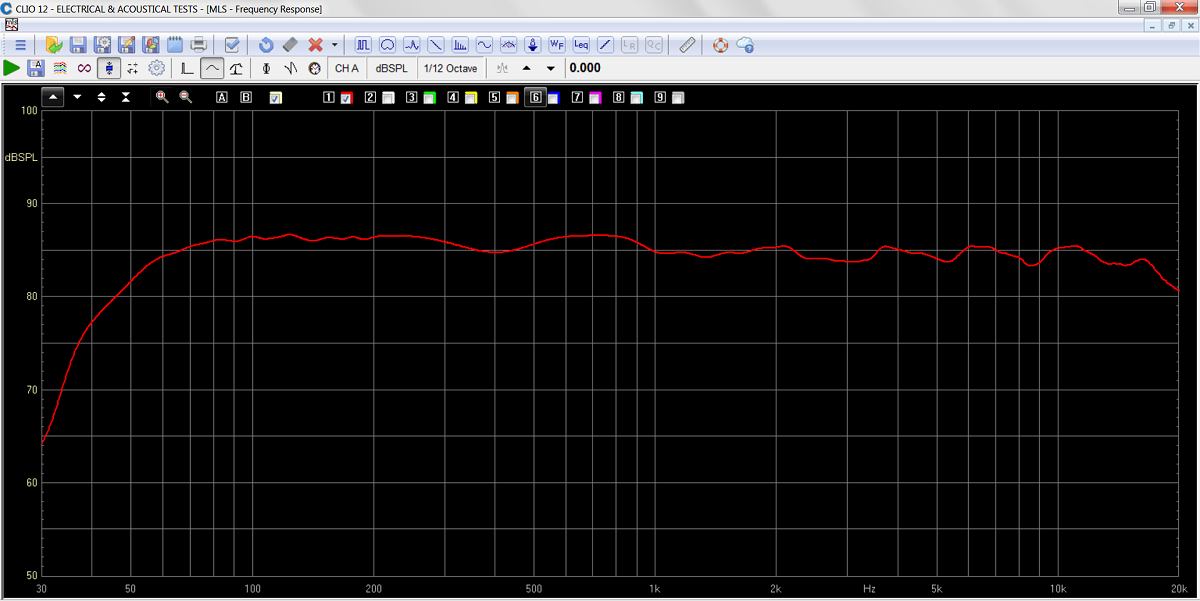
Frequency response of CNO-mkIII measured at 0.5 meter distance
normalised for 1 meter/2.8 volts.
Reading merged with W18NX001 near-field response @ 200 Hz with the
complex sum of port and bass driver.
If you were to measure the speaker in-room, it would certainly look very
different as room-gain would play its part.
Above what's coming from the speaker, ex room-gain. This is the best we
can do when not having a huge anechoic room.
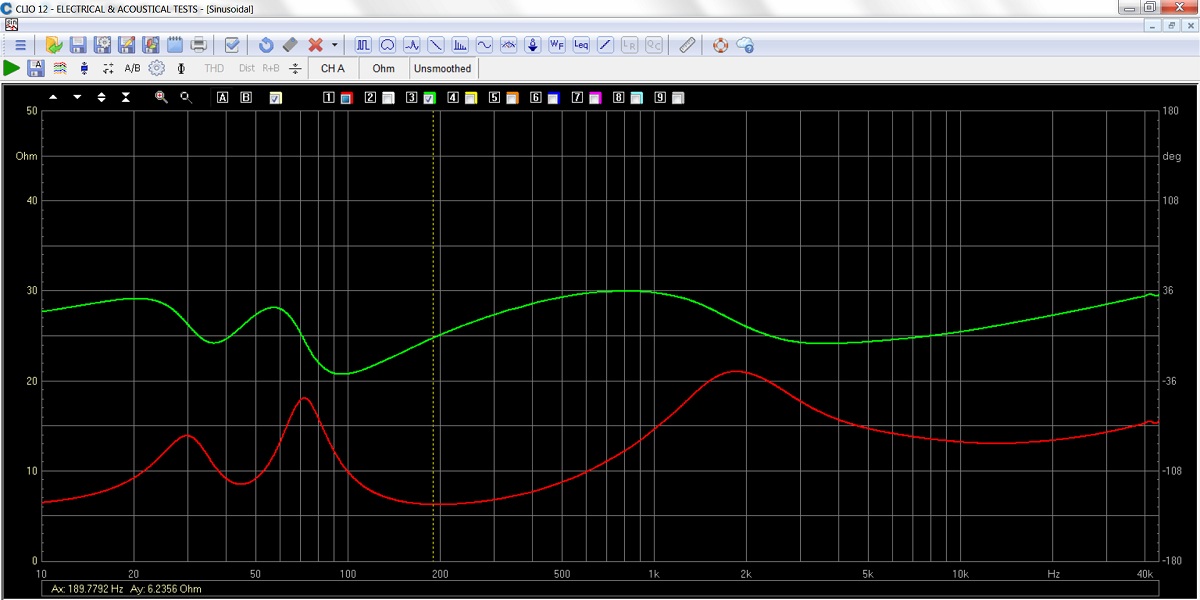
Impedance of CNO-mkIII with minimum 6.2 Ohm @ ~200 Hz. A rather tube
friendly design with no odd phase angles.
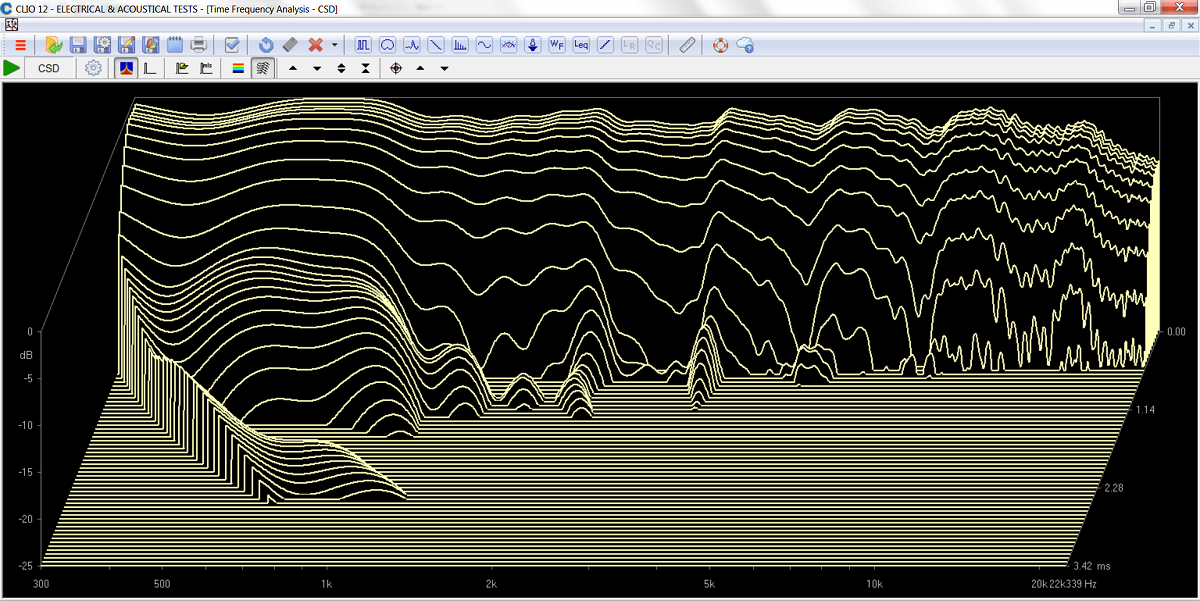
CNO-mkIII, CSD.
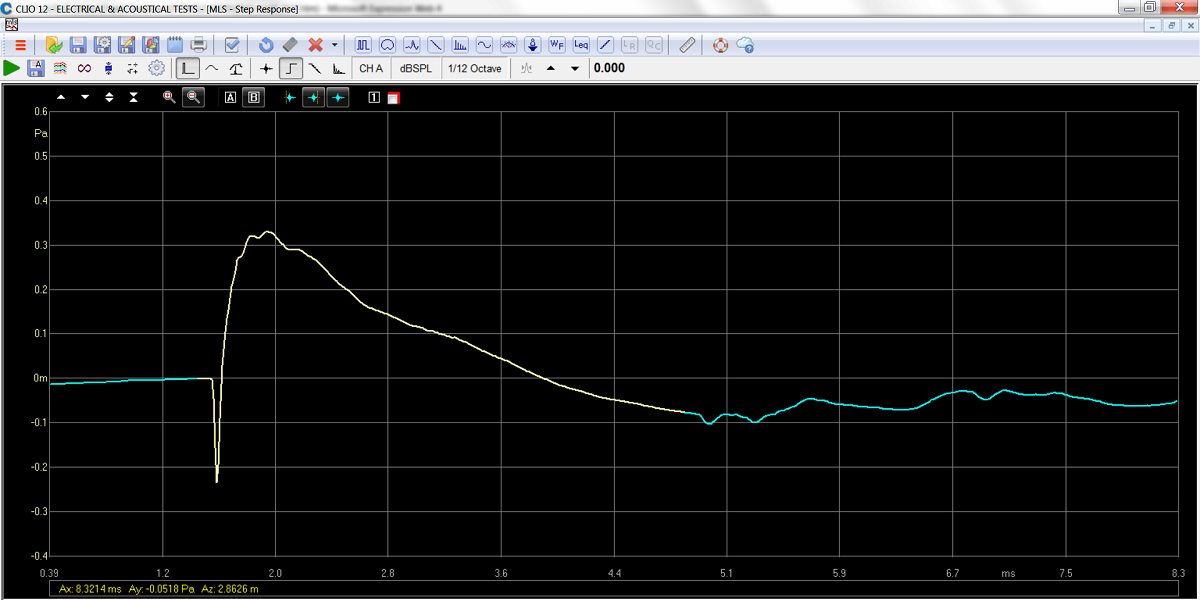
CNO-mkIII, step response. Notice positive tweeter response blends nicely
with woofer response.
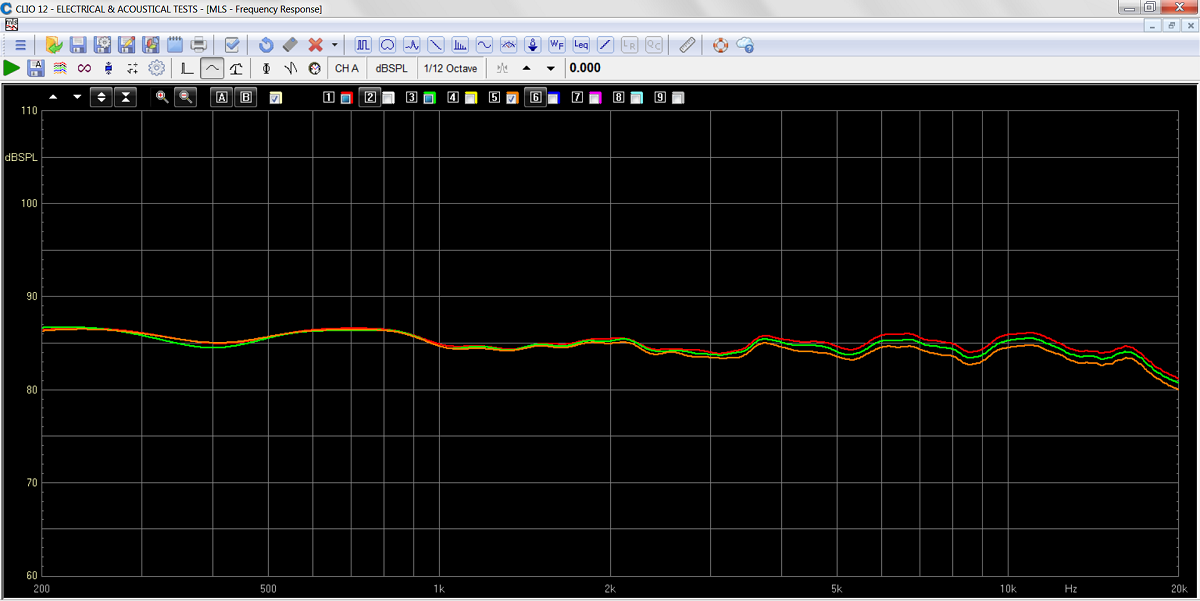
Response of tweeter from R1 having three different values. Details in
Kit Instruction.
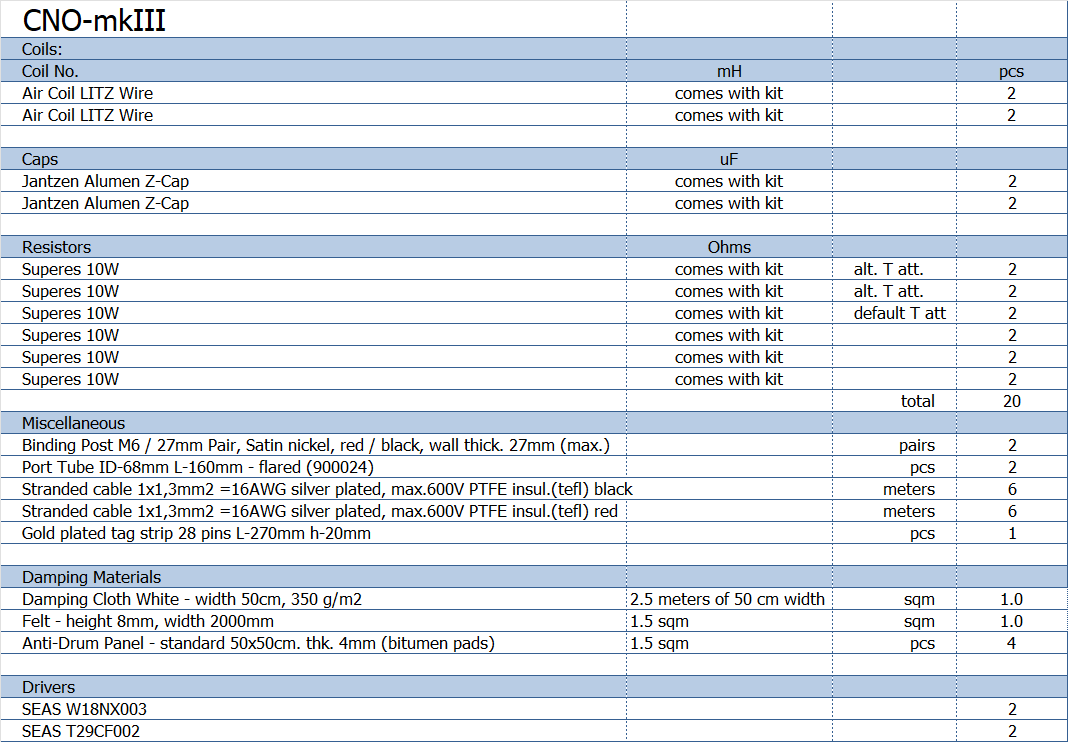
The bitumen pads are optional and
must be added to your order.
The kit can be ordered with W18NX003 or W18NX001 midbass drivers.
Felt material and bitumen pads are the same
for all cabinet
options.
All kit and component prices may be subject to change and are always to be confirmed by Jantzen Audio Denmark.
Download Kit
Sale Presentations:
All technical questions to troels.gravesen@hotmail.com
All questions regarding purchase of kits, please mail Jantzen Audio at contact@jantzen-audio.com
CROSSOVER-LAYOUT
BACK TO INDEX
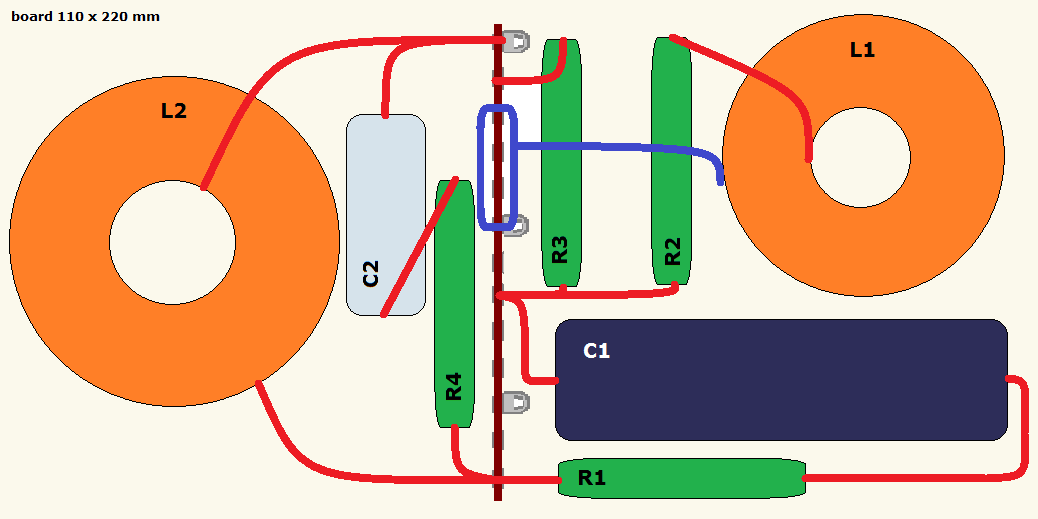
Crossover layout.
For R1 you can stack the three resistors on the board and connect the
one providing your preferred treble level.
Smaller value = higher treble, high value = lower treble level.
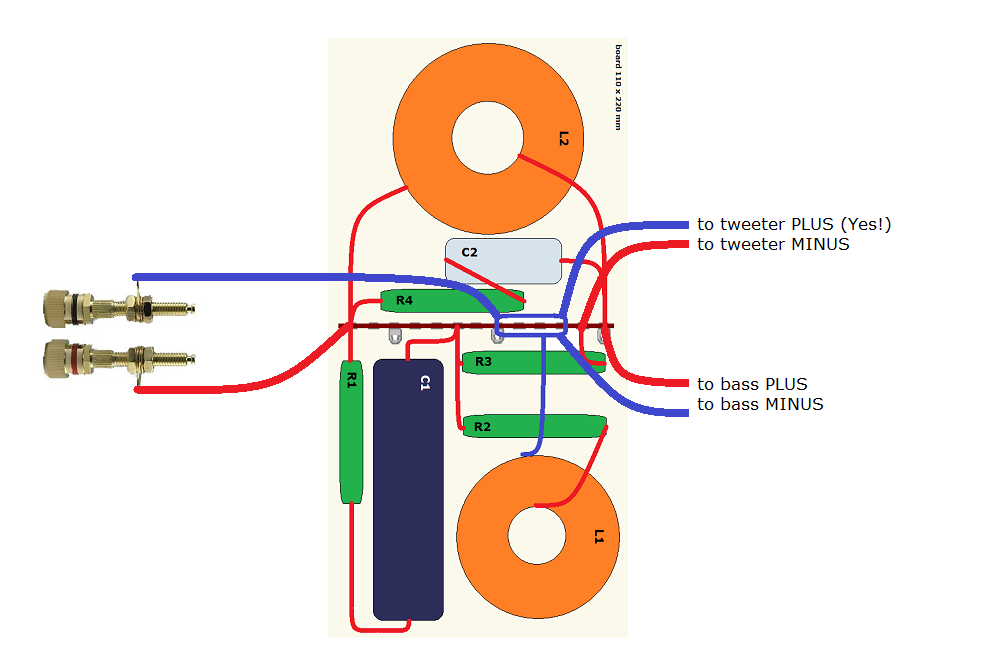
Speaker wiring.
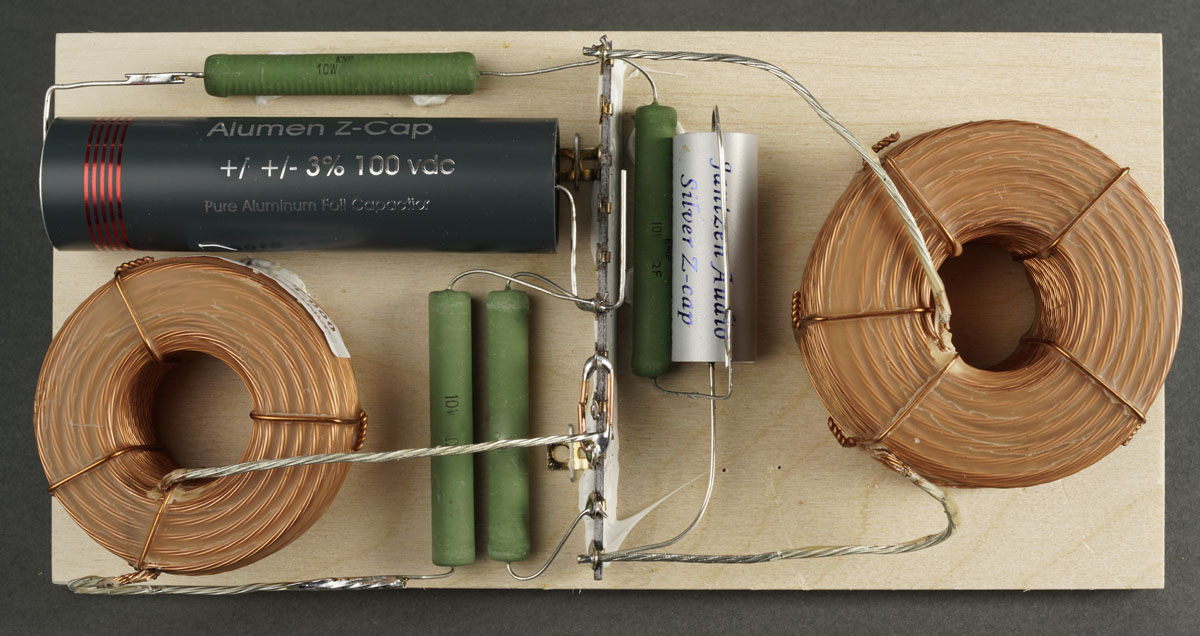
CNO-mkIII crossover.
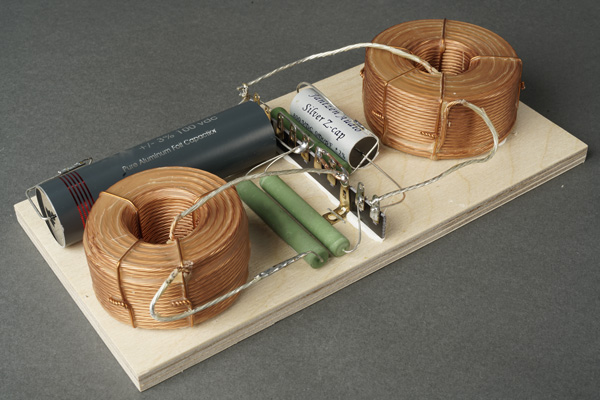
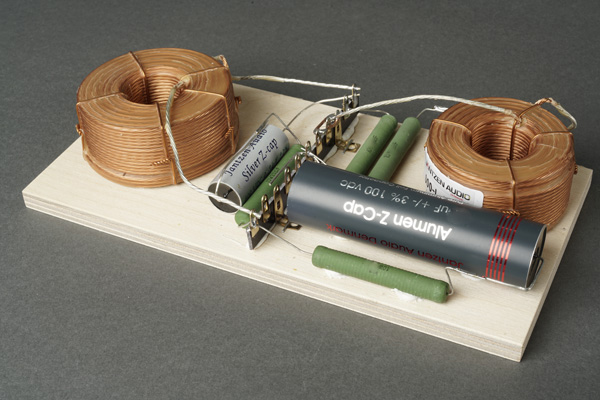
Click images above to view large.
